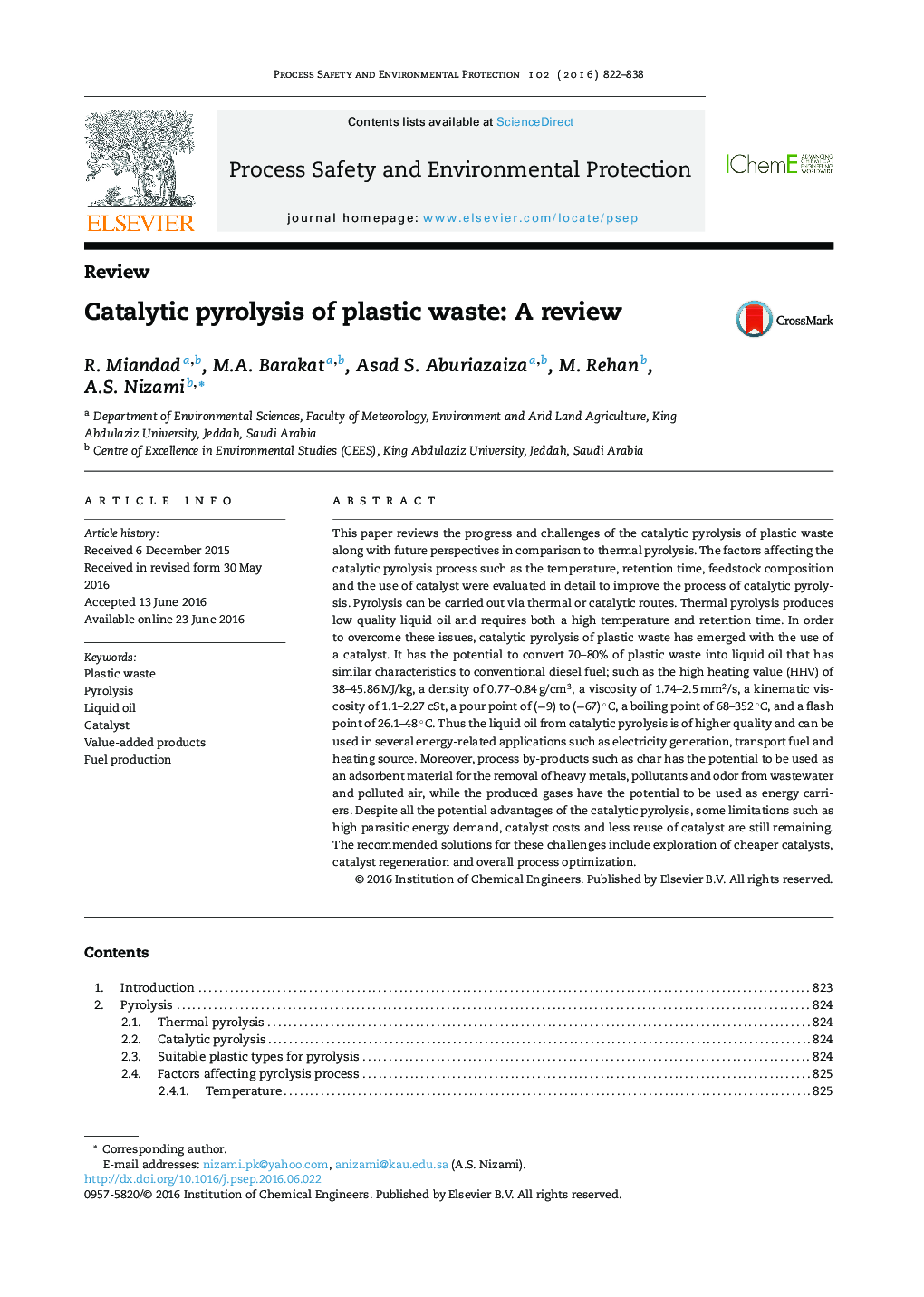| کد مقاله | کد نشریه | سال انتشار | مقاله انگلیسی | نسخه تمام متن |
|---|---|---|---|---|
| 588132 | 1453336 | 2016 | 17 صفحه PDF | دانلود رایگان |
This paper reviews the progress and challenges of the catalytic pyrolysis of plastic waste along with future perspectives in comparison to thermal pyrolysis. The factors affecting the catalytic pyrolysis process such as the temperature, retention time, feedstock composition and the use of catalyst were evaluated in detail to improve the process of catalytic pyrolysis. Pyrolysis can be carried out via thermal or catalytic routes. Thermal pyrolysis produces low quality liquid oil and requires both a high temperature and retention time. In order to overcome these issues, catalytic pyrolysis of plastic waste has emerged with the use of a catalyst. It has the potential to convert 70–80% of plastic waste into liquid oil that has similar characteristics to conventional diesel fuel; such as the high heating value (HHV) of 38–45.86 MJ/kg, a density of 0.77–0.84 g/cm3, a viscosity of 1.74–2.5 mm2/s, a kinematic viscosity of 1.1–2.27 cSt, a pour point of (−9) to (−67) °C, a boiling point of 68–352 °C, and a flash point of 26.1–48 °C. Thus the liquid oil from catalytic pyrolysis is of higher quality and can be used in several energy-related applications such as electricity generation, transport fuel and heating source. Moreover, process by-products such as char has the potential to be used as an adsorbent material for the removal of heavy metals, pollutants and odor from wastewater and polluted air, while the produced gases have the potential to be used as energy carriers. Despite all the potential advantages of the catalytic pyrolysis, some limitations such as high parasitic energy demand, catalyst costs and less reuse of catalyst are still remaining. The recommended solutions for these challenges include exploration of cheaper catalysts, catalyst regeneration and overall process optimization.
Journal: Process Safety and Environmental Protection - Volume 102, July 2016, Pages 822–838
